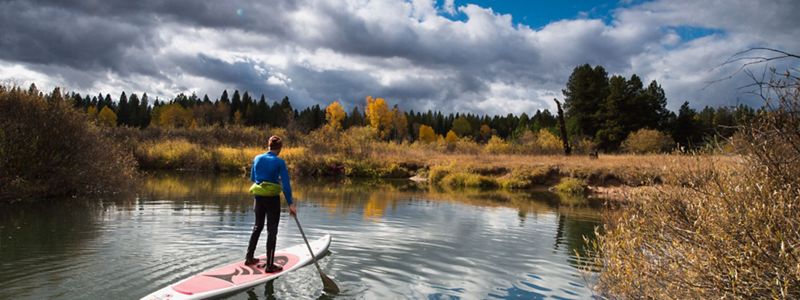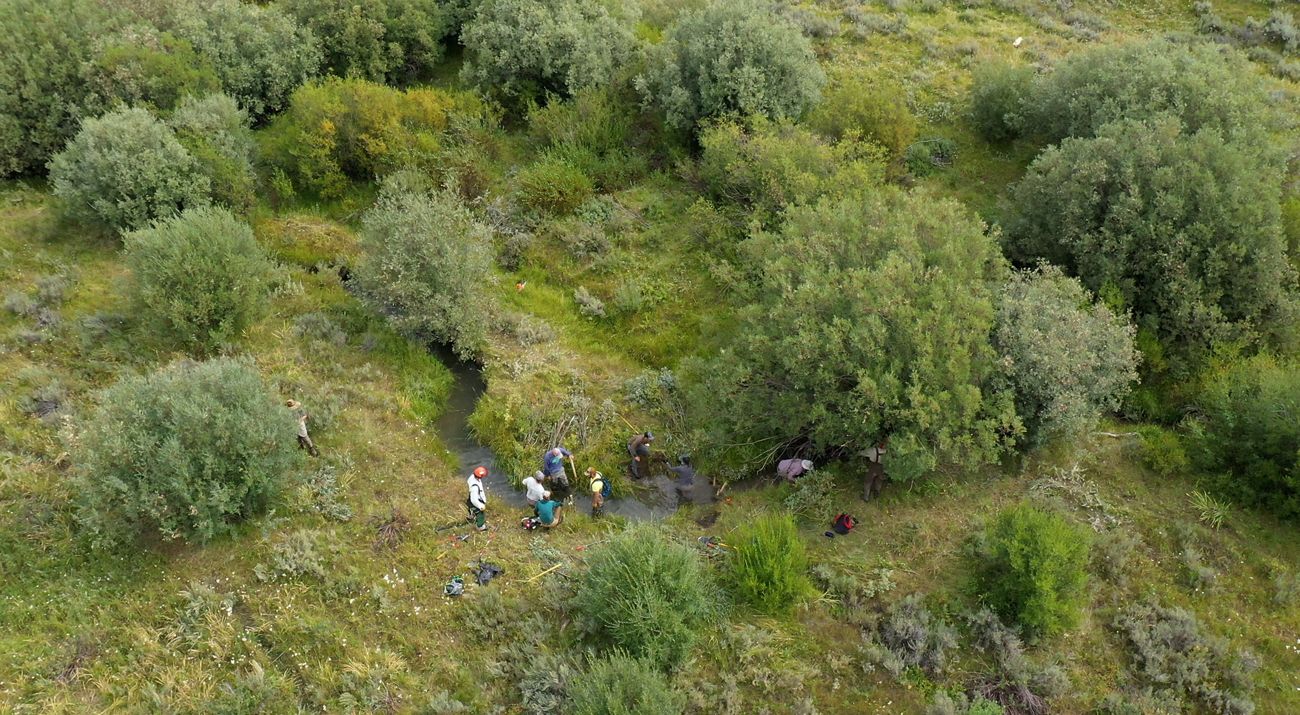Restoring Streams Within the Sagebrush Sea
Simple to build, rock and brush structures can have outsized benefits for wildlife and groundwater supplies.
On Horse Prairie near Dillon, Montana, the green tendril of a stream weaves through the Sagebrush Sea. Just two years ago, this streambed was a ravine, bordered by dry earth and cut deep by increasingly dramatic swings between drought and deluge. Today, thanks to the hard work of a young field crew mentored by Nature Conservancy staff, it is becoming a lush, meadow-lined oasis for wildlife in what is potentially the most vulnerable landscape on Earth.
We lose one million acres of sagebrush habitat across the West each year to invasive species, expanding subdivisions, climate change and other impacts. In the face of this loss, wet meadows along streams provide increasingly important, life-sustaining forage for wildlife such as pronghorn, deer, elk and sage-grouse. Wet meadows also capture the rain and snow that replenish groundwater supplies and that are crucial for the Sagebrush Sea’s eight million human inhabitants. Without these natural water catchments, neither wildlife nor people could thrive here.
Quote: Sean Claffey
Every single drainage has somehow been impacted. We need a solution that we can scale up to match the problem.
In southwest Montana, the problem is severe. “Every single drainage has somehow been impacted,” explains Sean Claffey, who leads the Southwest Montana Sagebrush Partnership for The Nature Conservancy. “We need a solution that we can scale up to match the problem.”
One of those solutions is surprisingly low-tech. Small rock structures, placed at intervals along a stream, can cause the water to slow down and spread out over the land. The Nature Conservancy teaches landowners how to build these rock structures and encourages them to share what they have learned with their neighbors. We also partner with government agencies and employ youth crews to achieve the large-scale restoration that is urgently needed. At Horse Prairie, for instance, Youth Employment Program crews built 75 rock structures, all by hand, in just over two days.
The rock structures are gradually transforming degraded streams. On a follow-up visit to Horse Prairie, Sean points to the potential they offer to wildlife and people as rain and snow become scarce. “We have probably six to ten times more wetted area through this meadow,” he observes. “If we could do that throughout the whole watershed, what does that mean for water storage throughout a whole basin?”
We Can’t Save Nature Without You
Sign up to receive monthly conservation news and updates from Montana. Get a preview of Montana’s Nature News email.






